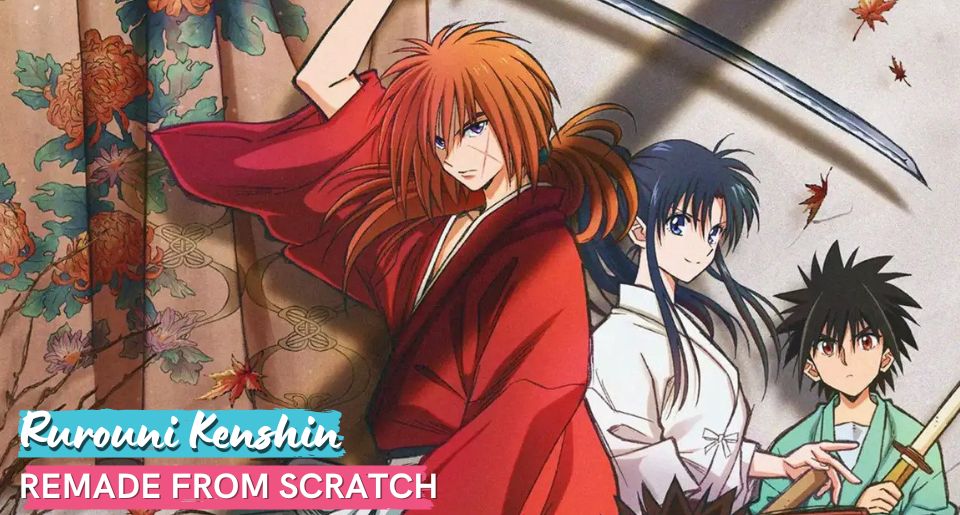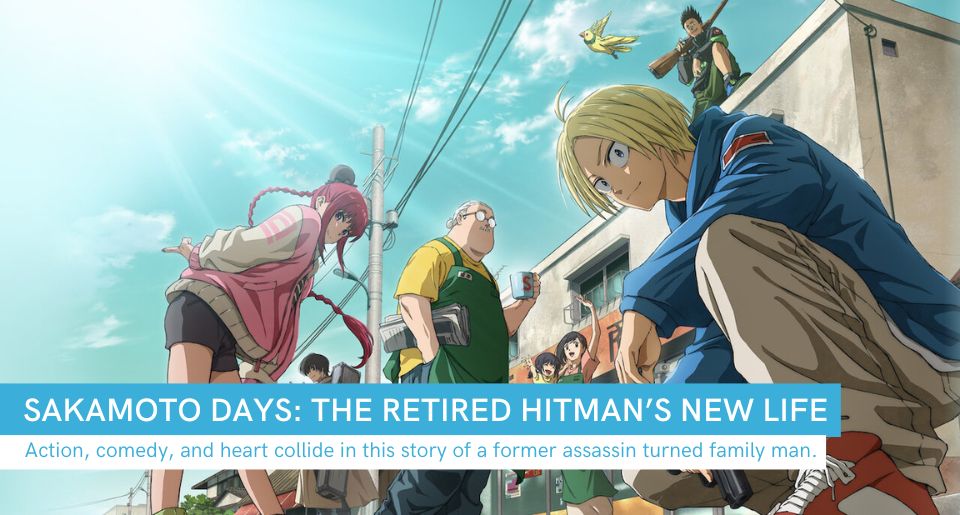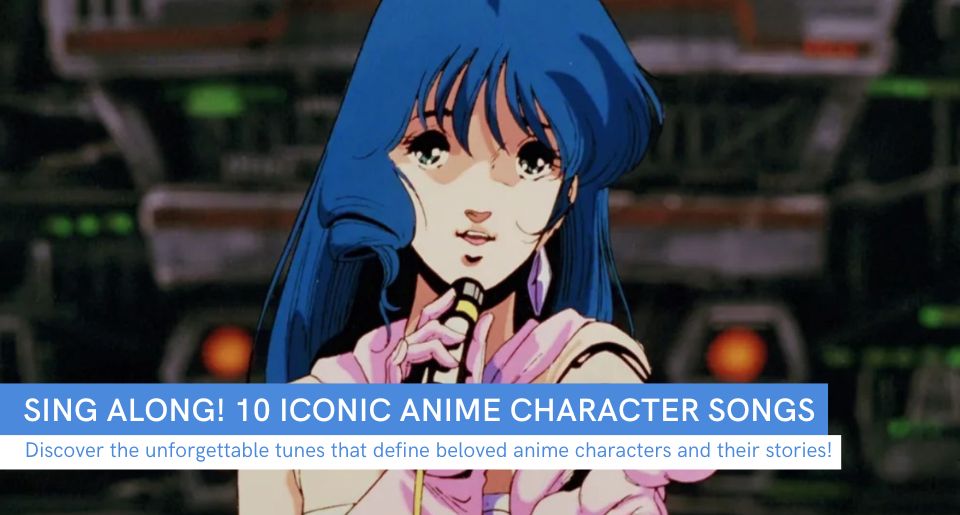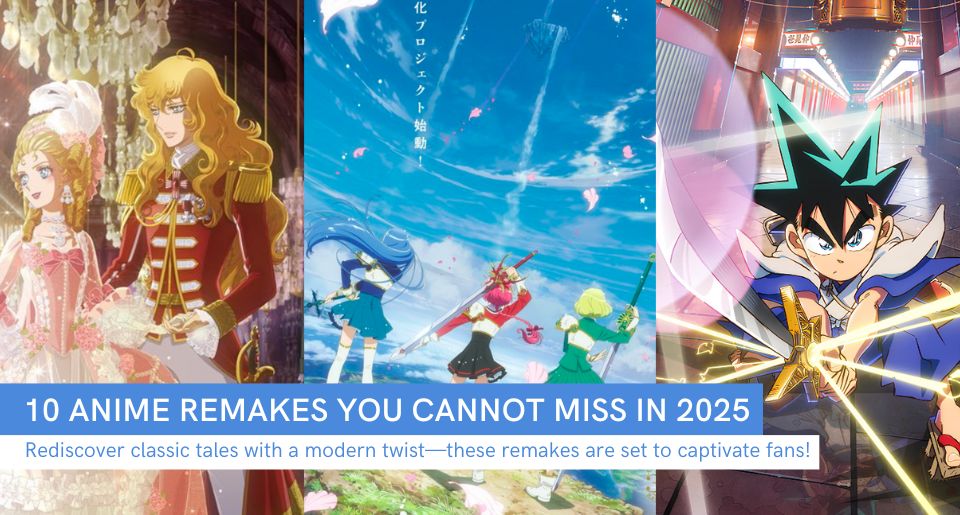Contents
Introduction
If you’re a ‘90s kid, chances are you've already crossed paths with the legendary Rurouni Kenshin on your local TV channels. Back then, this series stood tall as one of the most beloved and popular anime and manga franchises of its time. Its lead character, Kenshin Himura, has since carved his name into the annals of anime history as one of its most iconic figures.
What is Rurouni Kenshin?
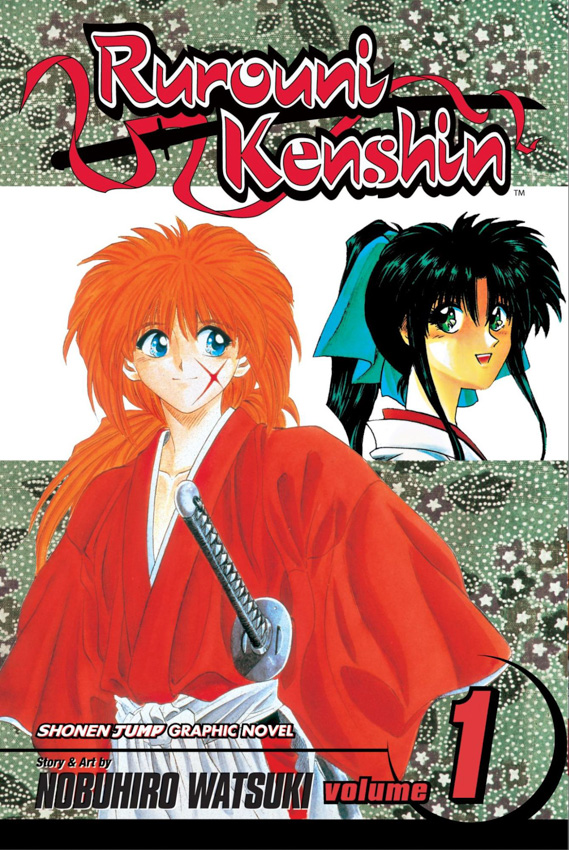
The first volume of the English edition of the manga, featuring Kenshin Himura and Kaoru Kamiya.
Originally created by the talented Nobuhiro Watsuki, Rurouni Kenshin, also known as "Samurai X" in certain regions, enjoyed a serialization run in Weekly Shonen Jump from 1994 to 1999. Its worldwide sales soared past an impressive 72 million copies, cementing its status as one of the best-selling manga series of all time.
What set the series apart was its perfect blend of action, historical intrigue, and character development. Its influence extends far beyond the printed page, with adaptations that include multiple anime adaptations, wildly popular live-action movies, numerous musicals and stage plays, and immersive video games. It has become an integral part of Japanese pop culture, etching a permanent mark on the hearts of fans worldwide.
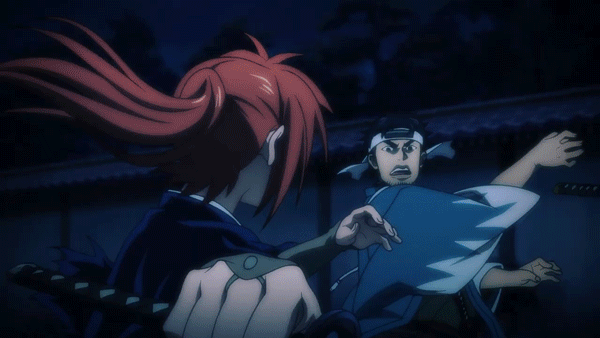
Kenshin’s past as “Hitokiri Battousai” as seen in the 2023 remake.
Rurouni Kenshin is set in the Meiji era and follows the story of Kenshin, a wandering swordsman who is also known as the "Battousai" or "Hitokiri Battousai." Kenshin used to be an assassin during the Bakumatsu period, a time of political turmoil and conflict in Japan. However, after the Meiji Restoration, which marked the end of the samurai era and the beginning of modernization, Kenshin decides to abandon his life as a killer and vows to never take another life. He carries a reverse-edged sword (sakabatou) to symbolize his commitment to non-lethal combat.
The series explores Kenshin's journey as he seeks redemption for his past actions and strives to protect the innocent. He becomes a rurouni—another word for a wandering or vagabond swordsman with no master—and he aims to use his sword skills for good. Along the way, he encounters various characters, both friends and foes, each with their own unique stories and motivations.
Differences Between The 1996 Anime vs. The 2023 Remake
The 1996 anime diverged significantly from the manga, evident even from the first episode. It took liberties with the backstory of the antagonist, Gohei, and completely omitted his brother, Kihei, from the narrative. Additionally, Dr. Gensai, a character originally slated for a later appearance, made an early debut in the 1996 anime, and two extra characters were introduced.
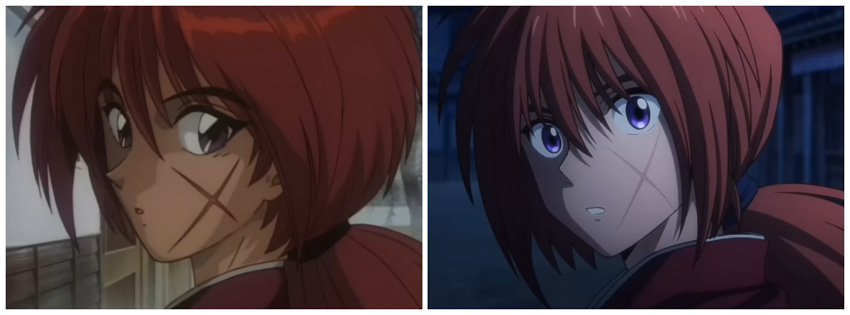
Kenshin’s character design: 1996 (left) and 2023 (right).
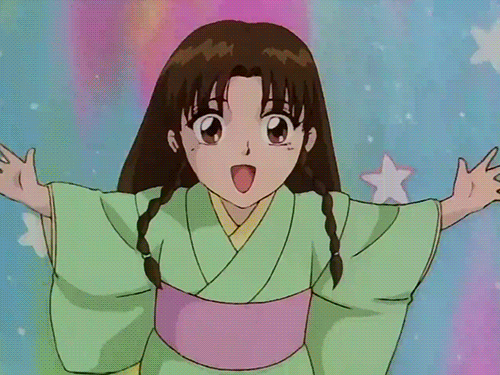
Unfortunately, Ayame and Suzume, Dr. Gensai’s granddaughters, only exist in the 1996 anime.
While the 1996 anime closely followed the manga in some parts, it also strayed from the source material. This trend continued throughout its run. The first two arcs were faithful adaptations, particularly the Kyoto Arc, which remained true to the manga. However, as the anime neared the ongoing manga storyline, it resorted to filler episodes to pad the series. The third arc, entirely anime-original, was received poorly, causing a significant drop in viewership and ultimately leading to the show's cancellation before it could adapt the final manga arc, the Jinchuu arc.
In contrast, the 2023 remake has aimed to be a more faithful adaptation, albeit with a reduction in the comedic elements present in the manga when compared to the 1996 anime. While some fans would have preferred retaining the humor, the remake leans towards a more serious tone by minimizing the comedic elements from the source material.
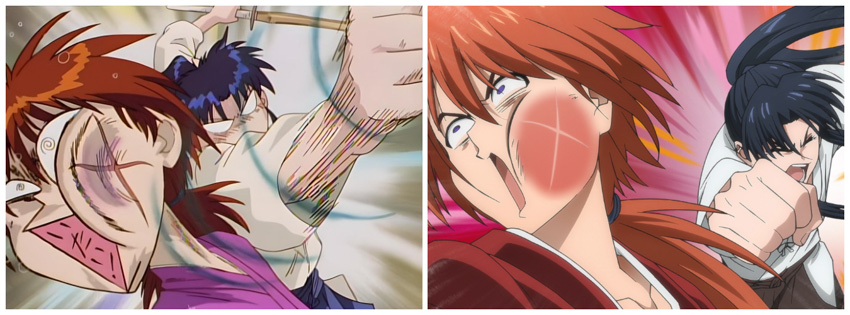
Comedic elements are either removed or drawn less exaggeratedly.
For a more detailed exploration of the differences between the manga, the 1996 anime, and the 2023 remake, you can check out these videos from Youtube:
Rurouni Kenshin - Manga/1996/2023 Anime Differences - Part 1
Rurouni Kenshin - Manga/1996/2023 Anime Differences - Part 2
When it comes to production, the Rurouni Kenshin remake truly impresses as it retains the core essence of the original artwork while offering a smoother and more refined visual experience. Action sequences in this remake seamlessly unfold, granting viewers a clearer and more detailed look at Kenshin as he wields his sakabatou to face his foes. This marks a significant departure from the 1996 anime, which often portrayed these moments with swift light effects, emphasizing Kenshin's incredible speed.
However, it's worth noting that the 1996 version excels in portraying slice-of-life scenes with a more cinematic touch, boasting superior aesthetics. In contrast, the remake aligns itself with modern anime aesthetics, offering a different viewing experience. It strikes a balance between the nostalgia of the original series and a contemporary visual style, providing fans with a fresh yet familiar take on the beloved story.
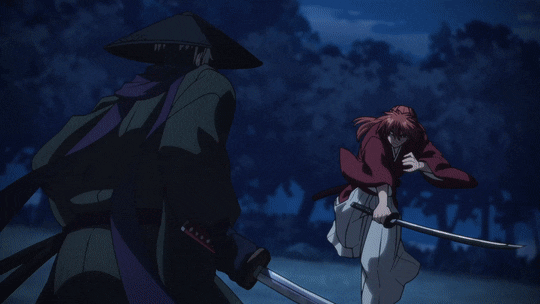
The 2023 remake has more fluid fight scenes as compared to the original.
One of the most noticeable changes in the remake is the voice cast. With several original cast members having either retired or passed away, the remake introduced an entirely new ensemble of voice actors. Saitou Souma now lends his voice to Kenshin Himura, taking over from the iconic Suzukaze Mayo. While this shift may initially feel significant, Saitou's performance effectively captures the character's spirit. Kenshin in the remake exudes a more masculine aura, partly due to the deeper voice he now possesses. Similarly, Kaoru's character, voiced by Takahashi Rie, remains faithful to the portrayal by Fujitani Miki in the original series. This seamless transition allows fans to rekindle their connection with the character.
The opening and ending themes deserve special recognition as well. Both songs, especially the ending theme by Reol, make valuable additions to Rurouni Kenshin's collection of memorable opening and ending tracks. While the opening may not quite match the impact of JUDY AND MARY's "Sobakasu", it holds its own. The original anime is renowned for its exceptional openings and endings, featuring performances by popular artists like T.M. Revolution and L'Arc~en~Ciel. Hopefully, the remake will also go down a similar path and give us a new set of timeless songs. On the other hand, the remake's soundtrack is okay but not that special—fans might prefer the old soundtrack more, partly due to nostalgia, partly because it is much more iconic.
TVアニメ『るろうに剣心 -明治剣客浪漫譚-』第一クールOP映像|Ayase✕R-指定「飛天」
TVアニメ『るろうに剣心 -明治剣客浪漫譚-』第一クールED映像|Reol「切っ先」
Is it worth your time to watch the 2023 remake, especially if you've already seen the 1996 anime? Despite a few flaws in comparison to the original, the remake is unquestionably worth seeing. It is more faithful to the manga, has more fluid animation, and carries greater narrative weight due to the lack of filler arcs and episodes. The Jinchuu arc, which has never been adapted into anime (except for Kenshin's past in the OVA), is a compelling reason to stick with this adaptation.
While letting go of the nostalgia associated with the 1996 series can be difficult, the 2023 remake injects a fresh perspective into the beloved Rurouni Kenshin series. This remake deserves a chance because it has a new voice cast, updated themes, and a dedication to the source material. Whether you're a longtime fan or a newcomer to Kenshin's world, there's something captivating about witnessing a classic tale reimagined for a new generation of viewers.
And of course, you can always check the manga for the unfiltered Rurouni Kenshin experience, which you can buy here at ZenPlus!
What do you think?
Will the remake be able to adapt everything in the manga until the Jinchuu arc?
Do you prefer Kenshin’s more masculine aura in the remake or do you prefer his original voice?
What do you think about the removal of the comedic elements in the remake?
Let us know in the comments or drop us a line on social media (Twitter, Instagram, Facebook)! We’d love to hear from you!
ZenPlus is your one-stop shop for all things Japanese. Check out our marketplace for manga volumes, cosplay, figures, and other merch from the Kaitou Saint Tail franchise!
You can watch Rurouni Kenshin (1996) and Rurouni Kenshin (2023) on Bilibili, Prime Video and Crunchyroll.
About The Writer
Cristy is a freelance artist and writer who has been obsessed with anime and manga since childhood. Her love for these imaginative worlds fuels her creative endeavors, and she shows no signs of stopping anytime soon.

